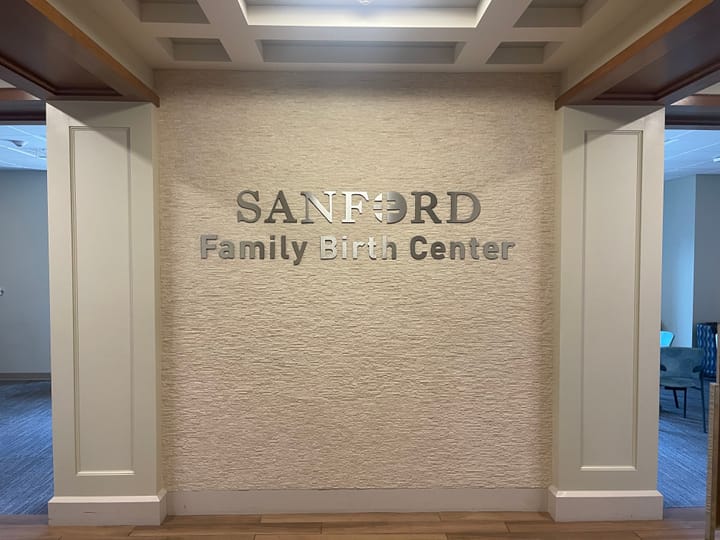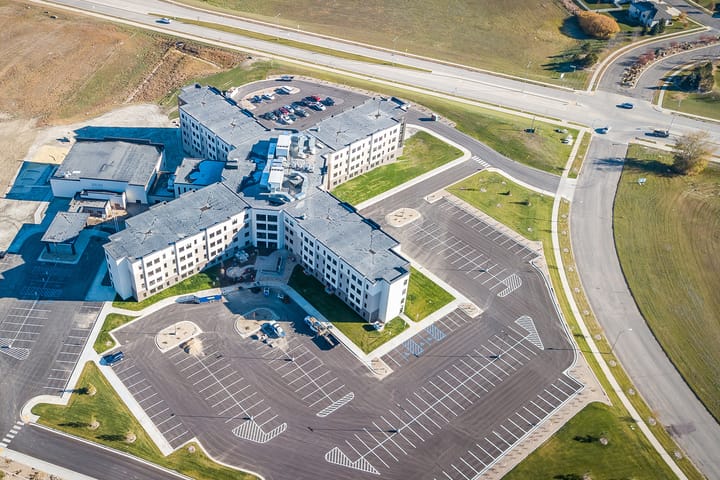Elderly care facilities face downsizing, closure if workforce challenges unmet
Expense of contract nursing, shortage of nurses at forefront
For Jill Foertsch, administrator at St. Gerard’s Community of Care, which operates a 33-bed long-term care facility and an 11-bed independent living unit in Hankinson, the costs just keep piling up.
Before the pandemic, Foertsch rarely contracted traveling registered nurses (RNs), licensed practical nurses (LPNs) or certified nursing assistants (CNAs). Significant drops in staffing during the outbreak made it a necessity.
According to Foertsch, a CNA position that paid $33 an hour before the pandemic has escalated to as much as $85. An LPN that once started at $44 runs about the same, with the highest at $90 with $120 for overtime. A RN was usually $55, but has now gone up to around $130.
In fiscal year 2021 St. Gerard’s had to contract out for 7,089 hours, amounting to over $300,000, or around the equivalent of seven full-time workers the facility could not find, Foertsch said. Fiscal year 2022, ending last June, essentially saw a doubling of that, with 14,163 hours of contracted labor at a cost of over $827,000. The last six months show the same picture, she added.
“We have no plans of closing at this time, but I know we can’t sustain paying money like that for our workforce,” Foertsch said. “I don’t think there’s any nursing home that can do that.”
Under pressure
An average of three long-term care facilities in North Dakota have closed or downsized annually since 2020 and that trend appears set to continue unless the state can quickly address the lack of nurses, nursing assistants and the expense of contracting travel nurses, those in the field say.
Currently, 90 percent of long-term care facilities in the state must rely on contract nursing staff to meet their needs, according to data provided by the North Dakota Long Term Care Association (NDLTCA). Expensive travel nurses eat up budgets that could be spent on facility upgrades, pay and bonuses for permanent staff, and other policies to attract full-time workers.
The 192 long-term care facilities in North Dakota - which includes assisted living, basic care and nursing homes - lost around 15 percent of their staff during the pandemic and there are no signs of workers returning soon.
Registered nurse turnover stands at 43 percent and certified nursing assistant turnover at 66 percent. At least 89 percent of facilities have reported shortages of staff and 57 percent are operating at a loss, according to NDLTCA data.
Nationally, staffing at long-term care facilities dropped by 410,000 between 2020 and 2021 and only began rebounding last year with around 103,000 joining or re-entering the full-time workforce, according to the federal Bureau of Labor Statistics.
Without permanent staff, more facilities will close, hitting rural areas of North Dakota the hardest. Closures lead to longer travel times for family and friends to see their loved ones in larger cities. The loss of facilities and jobs adds to the continued hollowing out of rural communities as knock on effects hit other businesses ranging from local pharmacies to grocery stores.
“It’s just a big impact on your community, let alone that you don’t have that level of care anymore locally,” Shelly Peterson, President of the NDLTCA said in an interview at the Capitol.
The challenge of staffing long-term care facilities and providing services in rural areas continues to grow as more baby boomers retire.
“In 2029 is when we predict that it’s really going to be hitting hard for our baby boom population and those most likely to need care,” Peterson said. “The issue will be can we staff to what they need in 2029 and how many will have closed by 2029, because they can’t withstand the financial pressure they are on now. That’s only six years away.”
Those pressures have already led to administrators at Heart of America Medical Center in Rugby to plan on reducing their current 33-bed skilled nursing unit down to 18 and moving that to inside the hospital. The move allows the unit to share staff in the hospital instead of maintaining a separate dedicated contingent.
“I can’t get enough CNAs and nurses to provide for elder care and I don’t see that getting any better,” Erik Christenson, chief executive officer at Heart of America, said.. “I have quite a few employees who will retire in the next ten years. Am I going to be able to attract people to replace them in Rugby, North Dakota, in rural North Dakota? It’s a real concern.”
Better pay, attraction policies needed
To address the worker shortage, Carrie Amero, director of long-term services and supports at AARP, said that state governments and private employers need to be prepared to increase starting-level wages, particularly for positions like CNAs.
“The pay is comparatively low compared to other kinds of entry level jobs, and these are very difficult jobs,” Amero said. “They’re emotionally and physically stressful. They have high injury rates. They rarely come with even basic employee benefits like paid sick leave or health insurance and they don’t get a lot of training.”
The National Direct Care Workforce Resource Center ranks North Dakota 31 out of 50 states and the District of Columbia on its wage index, and 42 out of 51 on its worker supportive policies index. This signals room for improvement in pay, benefits and working conditions needed to attract more health care workers to the state, according to Amero. Neighboring Minnesota ranked 23 for both indices.
Besides pay and benefits, another factor leading to fewer applicants are continued Covid controls that require vaccination, weekly staff testing, continued masking and other policies that most institutions have moved on from but remain in place due to federal mandates, administrators said.
“Everyone stepped up and said, ‘We’ll do whatever it takes to get through this,’” Pete Antonson, CEO of Northwood Deaconess Health Center near Grand Forks said of the initial Covid controls. But now, those requirements are scaring people away when they weigh the costs and benefits to other employment in a highly competitive labor market, Antonson said.
Both Covid controls and increasingly expensive contract workers can ultimately only be addressed at the federal level, administrators said.
Meanwhile, Jody Nelson, CEO at St. Luke’s Medical Center in Crosby, said they are trying to attract workers with larger sign-on bonuses. That includes $5,000 for CNAs and up to $20,000 for registered nurses, but it hasn’t made much of a dent.
In September 2021, St. Luke’s closed its 40-bed Sunrise Care Center and absorbed nine of the residents in a care facility inside the hospital. It had to close its doors to another 10 residents of the facility. Residents moved to available care openings in Tioga, Williston, and as far away as Minot, further eroding the community.
Most administrators said they were hopeful that immigration into the state from outside the U.S. could be streamlined if bills under debate during North Dakota’s legislative session are passed. Senate Bill 2142 specifically calls for the creation of an immigration office within the Department of Commerce to recruit foreign health care workers.
The North Dakota News Cooperative is a nonprofit news organization providing reliable and independent reporting on issues and events that impact the lives of North Dakotans. The organization increases the public’s access to quality journalism and advances news literacy across the state. For more information about NDNC or to make a charitable contribution, please visit newscoopnd.org. Send comments, suggestions or tips to michael@newscoopnd.org. Follow us on Twitter: https://twitter.com/NDNewsCoop.



